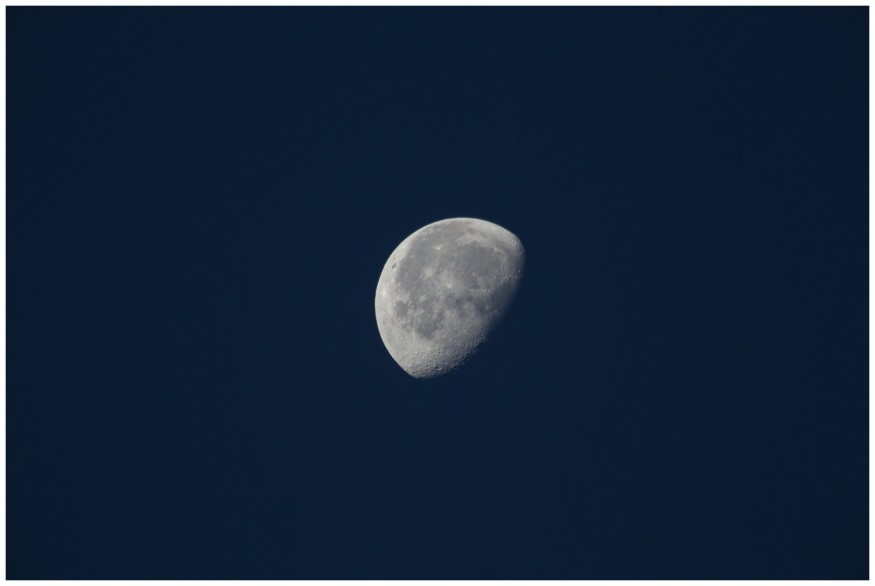The Moon, a captivating presence in the night sky, is about 1/6th the size of Earth and located around 238,855 miles (384,400 kilometers) away. Intriguingly, only one side of the Moon can be seen from Earth due to synchronous rotation, where it rotates and orbits at the same rate. This leaves one hemisphere enshrouded in mystery.
But here are some of the fun facts about the lunar satellite:

The Moon's Size
The Moon, the brightest object in the night sky, is approximately 1,079.6 miles in mean radius and 2,159.2 miles in mean diameter, making it less than a third the size of Earth. It's located about 238,855 miles away on average, and its size is akin to a coffee bean compared to Earth if Earth were the size of a nickel, ranking it as the fifth-largest moon in the Solar System.
Moon's Distance From Earth
The Earth and the Moon may seem close in drawings, but they're significantly apart. On average, the Moon is around 238,855 miles (384,400 km) away, approximately the distance of 30 Earths. However, its orbit isn't perfectly circular, varying from 225,623 miles (about 29 Earths) at its closest to 252,088 miles (almost 32 Earths) at its farthest.
Phases of the Moon
The Moon experiences eight phases in a lunar month, comprising four main phases and four transitional phases. These eight Moon phases in a lunar month include the New Moon, Waxing Crescent Moon, First Quarter Moon, Waxing Gibbous Moon, Full Moon, Waning Gibbous Moon, Third Quarter Moon, and Waning Crescent Moon.
NASA's Apollo Missions
NASA's Apollo Program achieved the monumental feat of landing American astronauts on the Moon and bringing them back safely, fulfilling a long-standing human dream. Its objectives included advancing technology, asserting U.S. leadership in space, exploring the Moon scientifically, and developing human capabilities for lunar operations.
READ ALSO : Moon Experiences Earthquake-Like Activity; Humans May Have Made It Quake Harder with Apollo 17 Base
Why Is the Far Side of the Moon Mysterious?
The Moon's synchronous rotation with Earth is the reason why only one side of the Moon is visible from the planet, despite it receiving equal sunlight on its far side. While the Moon orbits Earth in 27 days, the simultaneous rotation makes it appear as though it orbits every 29 days from our vantage point, requiring specialized missions to view its far side.
The Inside of the Moon
Scientists have confirmed the existence of a solid inner core within the moon, resembling Earth's, composed of iron and a small amount of nickel. Its core, while Earth-like, is relatively small at about 20% of its diameter, whereas Earth's core is approximately 50% of its diameter, and Earth also has an 'innermost inner core' with a unique structure.
No Air on the Moon
While Earth's atmosphere consists mainly of nitrogen (78%) and oxygen (just under 21%), the moon's extremely thin exosphere contains gases such as neon (29%), helium (25%), hydrogen (22%), and argon (20%). The moon's exosphere also contains trace amounts of methane, ammonia, carbon dioxide, sodium, and potassium, but notably lacks oxygen.
Is There Water on the Moon?
NASA detected conclusive evidence of water on the Moon, particularly in sunlit regions, with more abundance than initially thought. The moon's polar regions are estimated to hold over 600 billion kilograms of water ice, which could serve as a valuable resource for future space exploration, potentially as rocket fuel to propel human spacecraft beyond the Moon, including to Mars.
Next Lunar Mission
NASA's Artemis program aims to return humans to the moon and has plans to put the first woman and first person of color on the lunar surface, with Artemis II, a manned mission scheduled for launch next year, to prepare for Artemis III, the mission to return humans to the lunar surface.
The program's long-term goal is to establish a permanent moon base for astronauts to live and work in, alongside the Lunar Gateway space station, which is planned to be operational by 2026.
RELATED ARTICLE : Moon Plays Crucial Role in Life on Earth, Could Potentially Determine What Makes A Planet Habitable
Check out more news and information on the Moon in Science Times.










